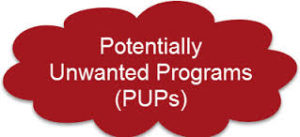
Purchasing a CMMS system can be a big expense – something to be considered seriously, certainly. It naturally begs the question of why would anyone other than the maintenance professional make that decision? By taking the decision out of the hands of the people that will have to use the software every day, you are begging to add the Excuse Metric to your KPI’s. What’s the Excuse Metric? It’s the top five reasons the people who have to use the system every day, the ones that had their opinion negated by your choice or weren’t even asked at all, will use to explain why you wasted your money.
The Top Five Excuses Reasons
1 – It’s too hard to use. What does that really mean? Was there no training included in the purchase price? Did they not go to training? Maybe they just don’t like it because it didn’t fit their needs to begin with. Since it doesn’t find their needs and you ignored their input, they are making it too hard to adopt the new process. This is a case where the training or customer support isn’t where it needs to be. If you can’t call for help whenever you want to and you can’t get training, you will not be able to use the CMMS correctly, if at all.
2 – It doesn’t do what I want/need it to. This is a great variation to #1. It may not do what maintenance wants it to. What do they want it to do? Will the software company make modifications so it does do what they want it to? Maybe the process they use can be adjusted so their KPI’s reflect what the system does (we think that’s a spectacularly bad idea, by the way). Maybe it doesn’t integrate information between modules, or with other departments, or maybe you only purchased the work order module and the information doesn’t integrate with your inventory software. This may be the most legit reason of the five.
3 – We can’t use it in the field. It’s 2016. Your CMMS should be at the very least accessible on a portable device, such as a smart phone or a tablet. If you purchase a CMMS that doesn’t have this capability, well, then this excuse is valid. The benefits of having field access to the CMMS is that each work order, asset, inventory item and PM are updated immediately. It matters for customer service, too, since the maintenance personnel in the office can answer questions if someone calls and asks.
4 – There are buttons instead of a drop-down menu. This is a user preference excuse. A drop-down menu is easier to see and use on a smart device, but maybe the office personnel like radio buttons in a multiple choice format. Whatever the reasoning, in this case no one will be happy.
5 – It takes too much time to use. This could go either way, as excuses go. If the CMMS takes forever to load, if you have to put information in twice due to lack of integration or poor usability, the reports are cumbersome or you have to manipulate the data in order to make it presentable, then the maintenance department could be right. Or this could simply be a lack of commitment to the process. Changing over from a pen and paper method, a spreadsheet method or even from another CMMS system is a process change requiring a little bit of change management and maybe a lot of patience.
The Final Word on Excuses Reasons
Those are the top five, and some are fixable and some are not. Sometimes it’s an adjustment in personnel that will make the CMMS work. The bottom line is that if you aren’t using the product and are required to make the purchase decision, the smoothest transition to your purchase will occur if the maintenance department agrees with you about the vendor choice. After all, if you don’t have to use the software, why not let the people who will have to use the software make the decision for you, within your budget? Then it won’t feel so much like you’ve spent money and the ROI isn’t there.
